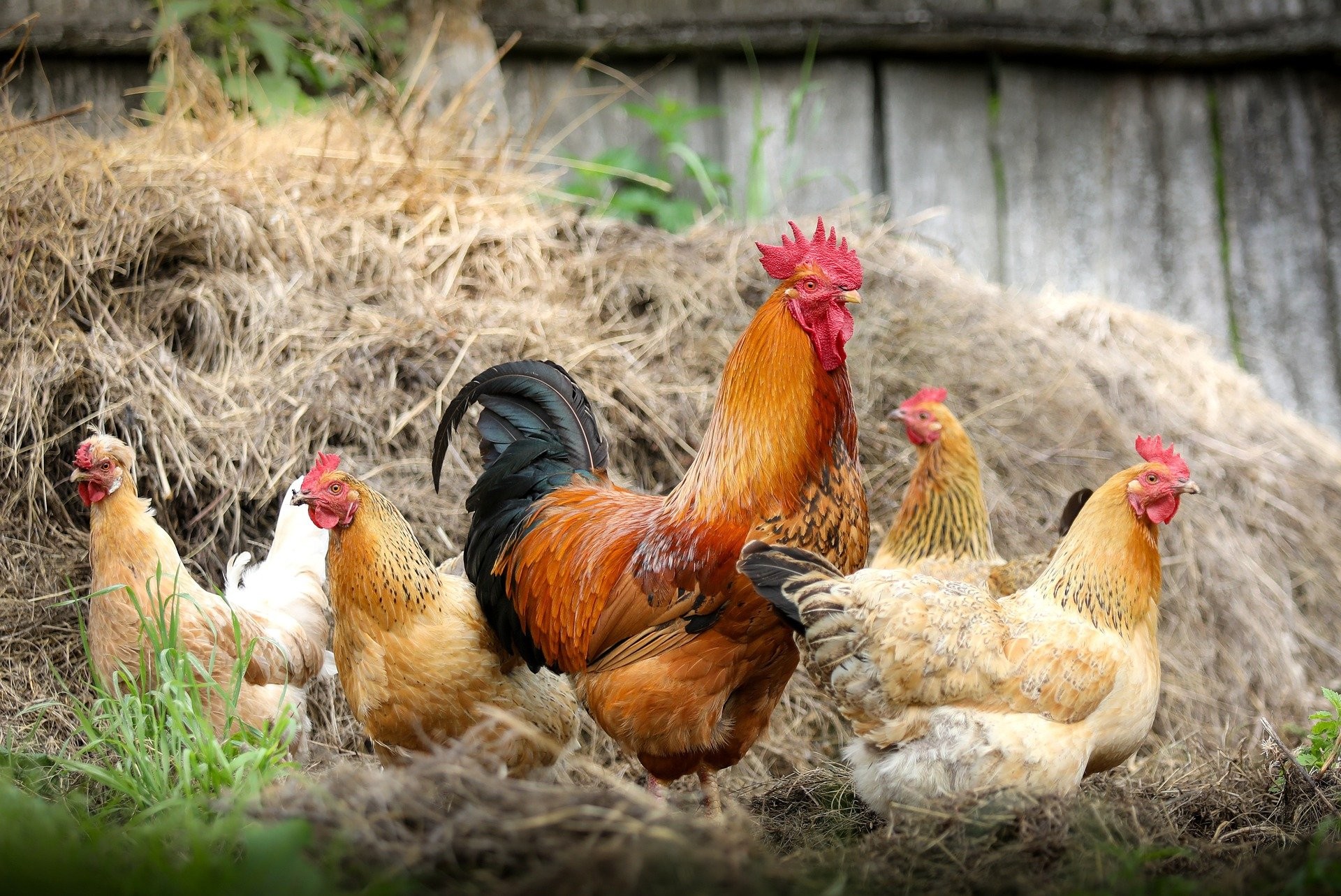The iconic sound of a cockerel’s crow is synonymous with the dawn, painting a pastoral image of countryside mornings. But is this morning serenade the only time these feathered fellows vocalize? And what exactly sparks this noisy behavior? Dive into these 10 fascinating facts to unravel the mysteries behind the regal rooster and its famous crow.
1. Cockerel vs. Chicken: Clearing Up the Terminology
It might seem basic, but the question often arises: Is a cockerel just another word for a chicken? Yes, indeed! “Cockerel” or “rooster” (or cock) refers to an adult male chicken. The adult female counterpart is known as a hen. And for those curious about the younger generation, a pullet is a term for a young female chicken before she starts laying eggs. Roosters are essentially the gentlemen of the chicken coop, distinguished by certain characteristics that set them apart from the ladies.
Just like males in many animal species, cockerels are the more flamboyant gender in the chicken world. They are nature’s showmen, boasting brightly colored plumage and elaborate tail feathers – think of them as dressed to impress! A cockerel truly is a handsome bird, often the undisputed head honcho on the farmyard. Even their walk, or strut, has a different swagger compared to the more demure hen.
Visually, you can tell them apart quite easily. Cockerels sport long, flowing tail feathers, larger combs and wattles (those fleshy bits under their beak), and pointed feathers cascading down their necks. Hens, in contrast, have more rounded feathers. Another giveaway exclusive to the males? Sharp spurs on the back of their legs, adding to their assertive persona.
2. Egg Laying and Cockerels: Dispelling the Myth
Do hens need a cockerel to lay eggs? This is a common misconception. The answer is a resounding no. Hens are perfectly capable of laying eggs without a cockerel’s presence. In fact, most of the eggs we consume are unfertilized – meaning they were laid by hens who haven’t been around a rooster. These unfertilized eggs are nutritionally and gastronomically identical to fertilized eggs.
A cockerel only becomes necessary if you’re aiming to expand your flock with baby chicks. Despite persistent myths, eggs laid by hens without a cockerel will never hatch into chicks. No rooster, no chicks! It’s as simple as that.
3. The Cockerel’s Fertilization Process: A Quick Guide
How does a cockerel actually fertilize an egg? It starts with a bit of courtship! The cockerel initiates a mating dance, often circling the hen to get her attention. This is the hen’s signal to crouch down in preparation. The cockerel then mounts the hen, lifts his tail feathers (and hers), and their cloacas (their posterior openings) briefly touch, allowing for sperm transfer. And that’s the swift and efficient act of fertilization!
4. Cockerels and Penises: Addressing the Awkward Question
This might be a slightly delicate question, but it’s surprisingly common: Do cockerels have penises? The answer is no, cockerels do not possess a penis in the way mammals do. The process isn’t about “impregnation” in the traditional sense.
Instead, during the cloacal kiss described above, the sperm is deposited into the hen’s reproductive tract. The hen stores this sperm in a specialized area called the “oviduct”. As an egg is released from her ovary, it travels through the oviduct where it encounters the stored sperm and fertilization occurs. Remarkably, a hen can store sperm for several weeks from a single mating session, allowing for multiple fertilized eggs. After the sperm’s viability wanes, she’ll need to mate again to continue producing fertilized eggs.
5. Unraveling the Crow: Why Cockerels Vocalize
Now we arrive at the heart of the matter: Why do cockerels crow? This is perhaps the most frequently asked question about these vocal birds. The iconic “cock-a-doodle-doo” is certainly loud – capable of waking even the deepest sleepers!
Beyond just being noisy neighbors, crowing serves vital purposes for cockerels. Their primary roles, aside from reproduction, are flock protection and social communication. Cockerels are diligent guardians, constantly patrolling their territory to safeguard their hens. Crowing is their way of declaring safety for their flock, asserting dominance within the social hierarchy, and issuing warnings of potential danger.
While some appreciate the cheerful sound of a cockerel’s crow, its volume and frequency are precisely why many urban and suburban areas have regulations against keeping them. The very trait that’s quintessential to rural mornings can be a point of contention in closer quarters.
6. Morning Crowing and Beyond: When Do Cockerels Vocalize?
Do cockerels exclusively crow in the morning, or is it an all-day affair? The answer is both! Cockerels are not strictly morning-only performers. They crow throughout the day – morning, afternoon, and even evening! They might crow to announce the start of a new day, to guide their flock to feeding areas, to mark territorial boundaries, and to signal alerts about approaching predators at any time.
The strong association of cockerels with morning likely stems from the fact that they often begin their crowing bouts just before sunrise. So, while they crow at other times, the pre-dawn chorus is perhaps the most noticeable and culturally ingrained.
Just how loud is a cockerel’s crow? On average, a crow registers between 80 to 90 decibels. And if you happen to be right next to a crowing cockerel’s head? Prepare for a whopping 142 decibels! To put that in perspective, a chainsaw clocks in at around 120 decibels. Prolonged exposure to such intense sound levels would be deafening for most creatures. However, chickens possess a remarkable adaptation to protect their hearing: When a cockerel fully opens its beak to crow, its ear canals partially close, shielding them from the full force of their own vocalizations.
The phenomenon of morning crowing is deeply rooted in a cockerel’s circadian rhythm, their internal biological clock. This internal clock is synchronized with the rising sun. As dawn approaches, a cockerel’s internal clock triggers a cascade of hormonal changes that prepare him for the day ahead. Crowing is one of these hormonally driven behaviors, signaling his readiness to defend his territory and assert his presence as the day begins. It’s a biological alarm clock, announcing his dominance and vigilance to the world, and particularly to his flock.
7. The Cockerel’s Role: More Than Just Crowing
For those raising chickens solely for eggs, cockerels are often deemed unnecessary. In confined chicken pens, their presence isn’t essential for egg production. Furthermore, many localities restrict cockerels due to noise concerns, and they can sometimes exhibit aggression towards humans entering their territory. Managing an aggressive cockerel can be challenging.
However, if you do find yourself with a cockerel, they bring valuable contributions to a flock. Cockerels are vigilant protectors, constantly scanning for predators and alerting the flock to danger. Remarkably, a cockerel will prioritize his hens’ safety above his own, allowing them to seek cover first in the face of threat. They also play a crucial role in maintaining flock harmony, mediating disputes among hens and offering protection to weaker or younger birds as they integrate into the flock. And in a surprisingly tender display, a cockerel might even present treats to hens as a form of gifting!
So, if space and neighborhood regulations permit, a cockerel embodies the quintessential image of a traditional family farm. Moreover, certain breeds are known for their more docile temperaments, exhibiting less aggression towards both hens and humans. These gentler breeds include Orpingtons, Australorps, Faverolles, and bantam varieties.
8. Cockerels as Food: Culinary Considerations
Is it possible to eat a cockerel? Yes, cockerels are consumed in many cultures worldwide. However, they are less commonly eaten in America compared to hens and broiler chickens. This is primarily due to economic factors. Raising hens for egg production and broilers for meat is generally more cost-effective than raising cockerels, especially since hens also contribute to egg supply.
9. Cockerel Diet: Nutritional Needs
Cockerels generally consume less food than hens because they don’t expend the significant energy required for egg laying. Hens have a higher calcium requirement, particularly for eggshell formation. If you keep cockerels and hens together, it’s advisable to provide supplemental calcium in a separate feeder accessible only to the hens. Excessive calcium intake is detrimental to cockerels, potentially leading to kidney stones and other health issues.
10. Cockerel Flight: Debunking the Myth of Flying Chickens
Can cockerels fly? While they possess wings, sustained flight is not typical for cockerels. They are capable of jumping, hopping, and perhaps clearing low fences with a burst of flight, but they are largely considered flightless birds. Long-distance flight, or even short flights without a running start, are beyond their capabilities. Cockerels primarily use their wings for communication, such as warning signals to the flock about predators or in displays of aggression during disputes with other cockerels.
Bonus: The Cockerel Weathervane: A Historical Symbol
Why are cockerels so often featured on weathervanes? The tradition dates back centuries. The earliest known weathervane graced the Tower of the Winds in Athens in the first century BC. The cockerel weathervane, or weathercock, emerged about a thousand years later when a papal decree mandated that every church should display a cockerel symbol. This was intended to remind the faithful of St. Peter’s denial of Jesus, who prophesied that the cock would not crow until Peter had denied him three times. In the 19th century, weathervane designs expanded to depict everyday life. Horses became popular, representing transportation, sport, and social status, with many weathervanes crafted in the likeness of famous racehorses.
“Wind from the east — bad for man and beast;
Wind from the south is too hot for them both;
Wind from the north is of very little worth;
Wind from the west is the softest and the best.”
–The 1851 Old Farmer’s Almanac
(Explore more folklore surrounding Cockerels, Cockcrows, and Weathercocks)
Do you have more questions about cockerels? Share them in the comments, and we’ll gladly provide answers!


